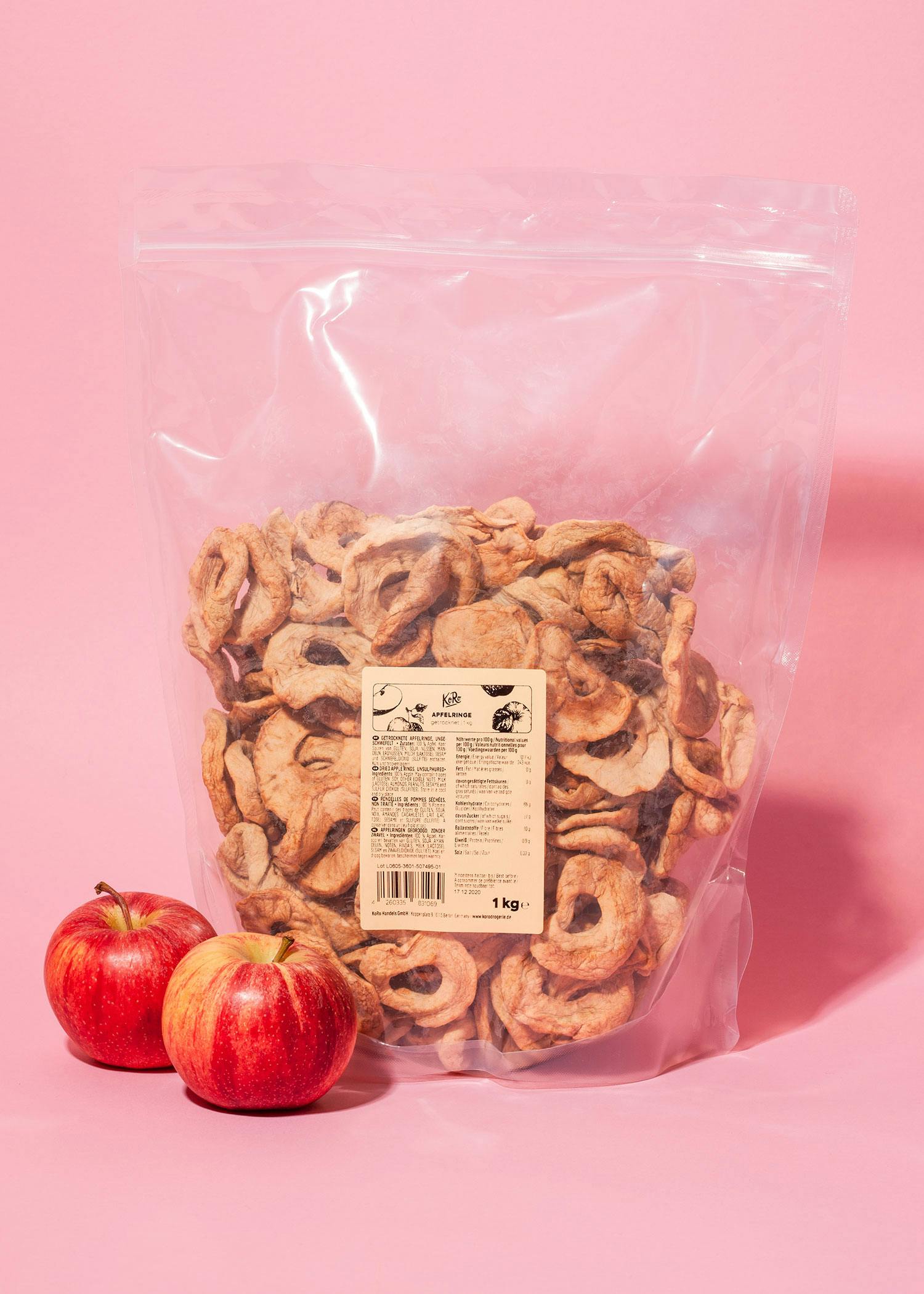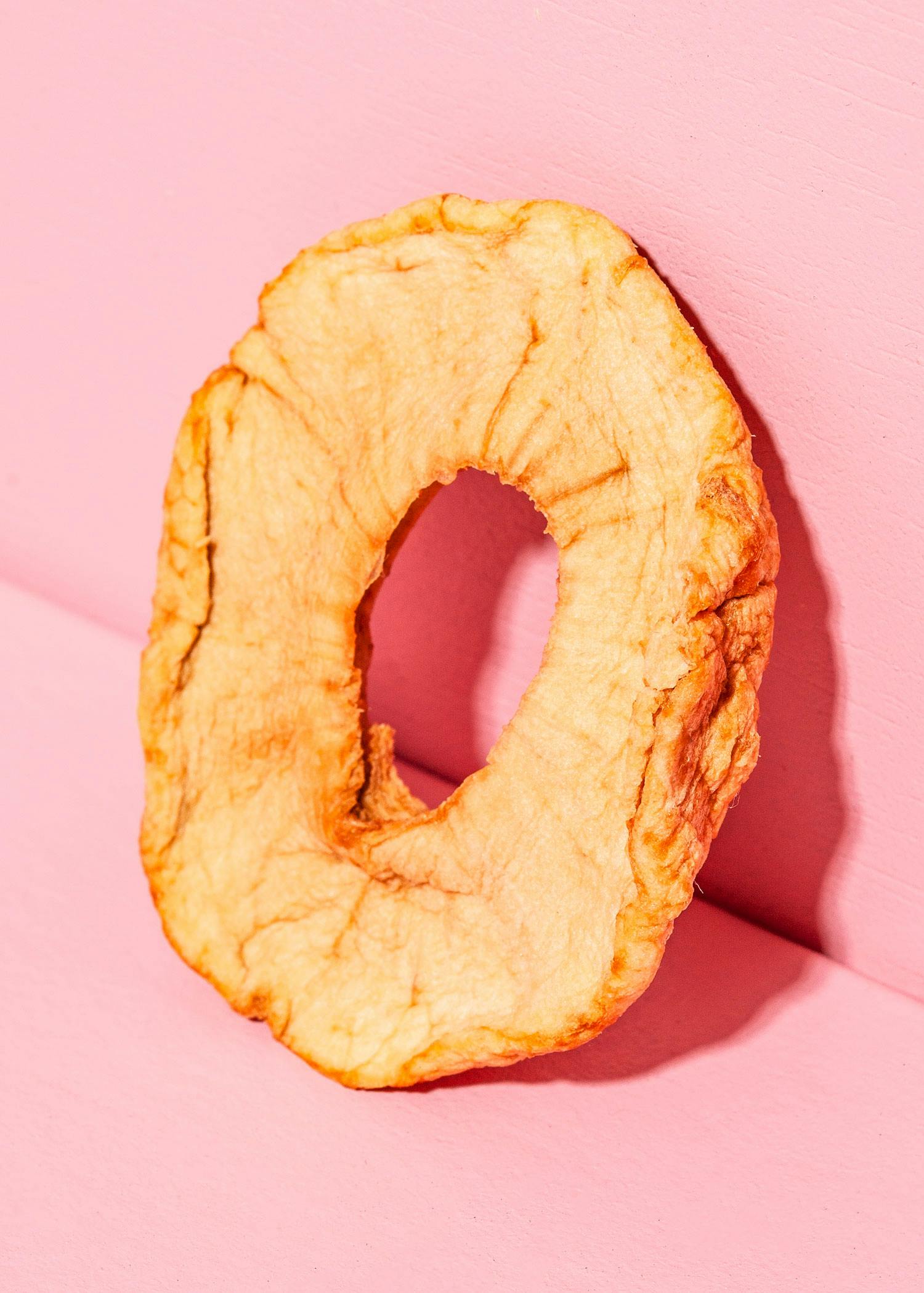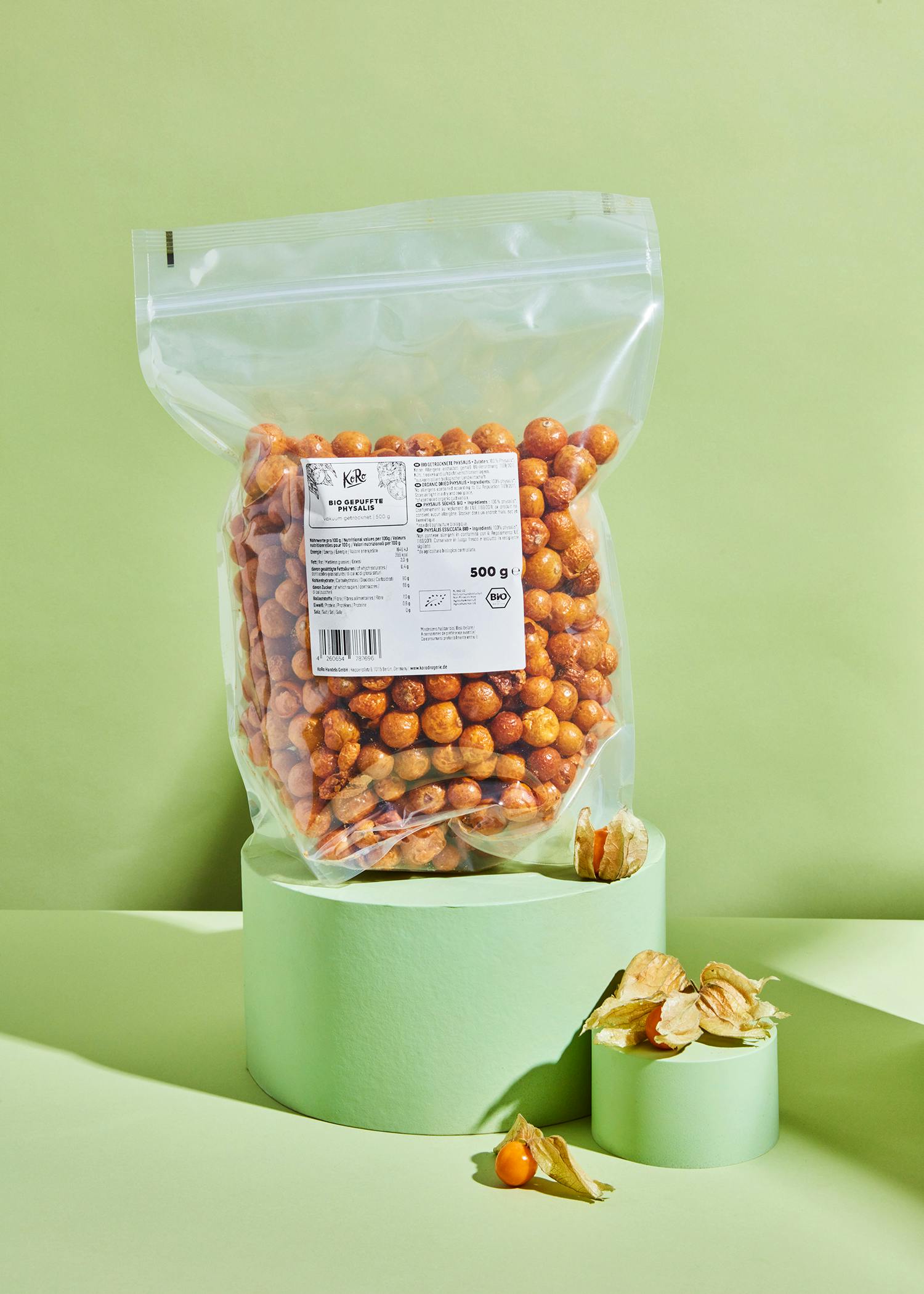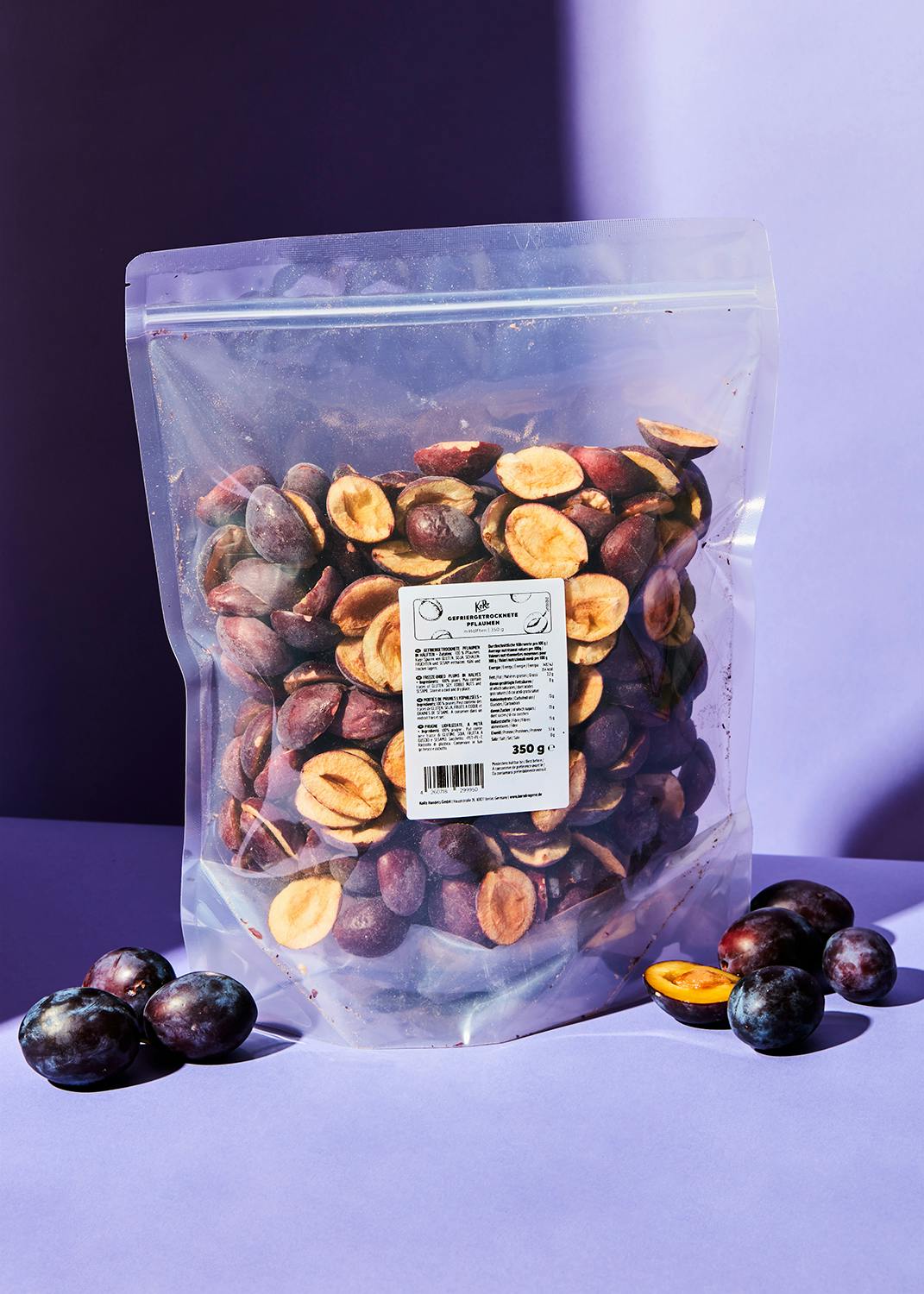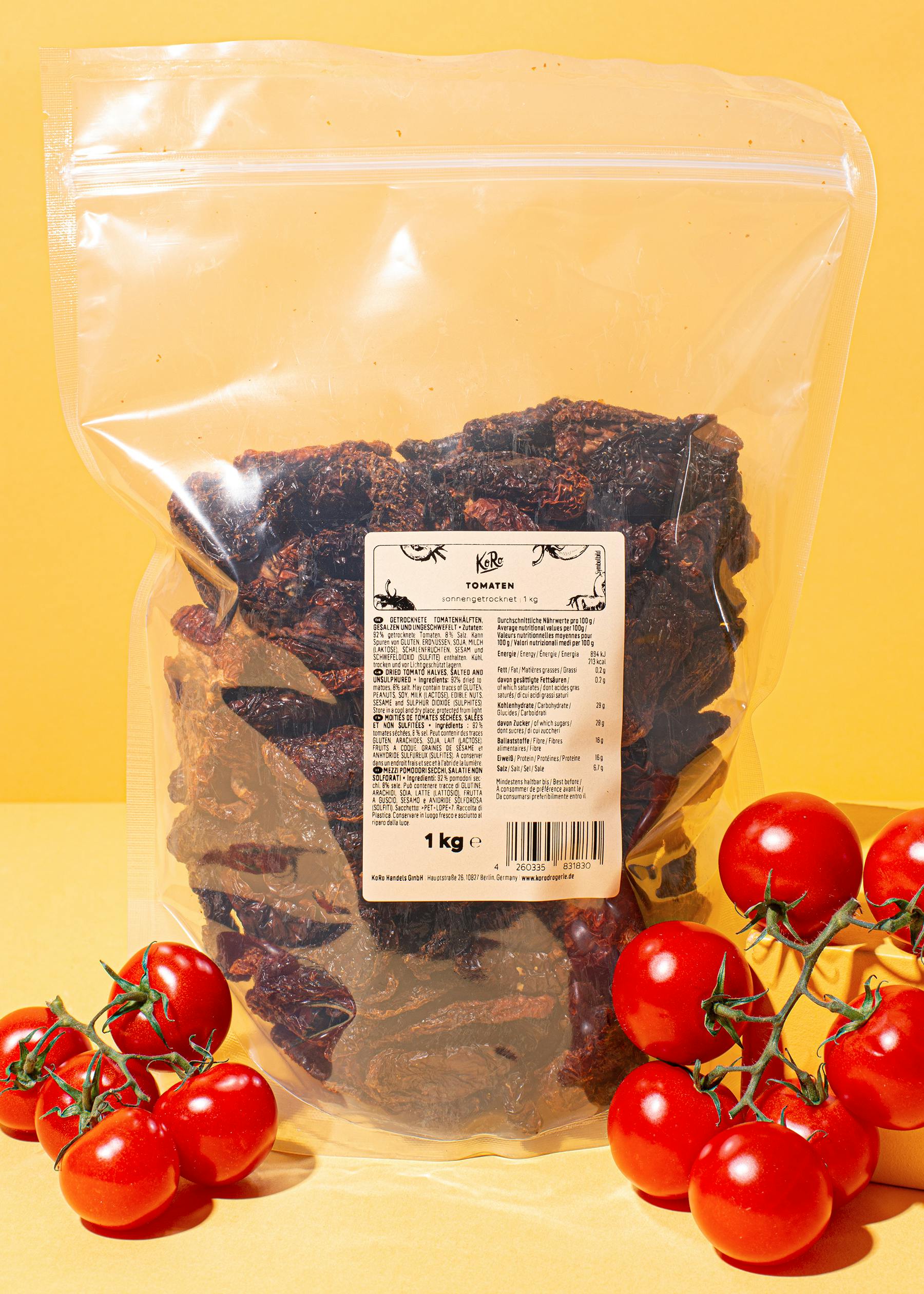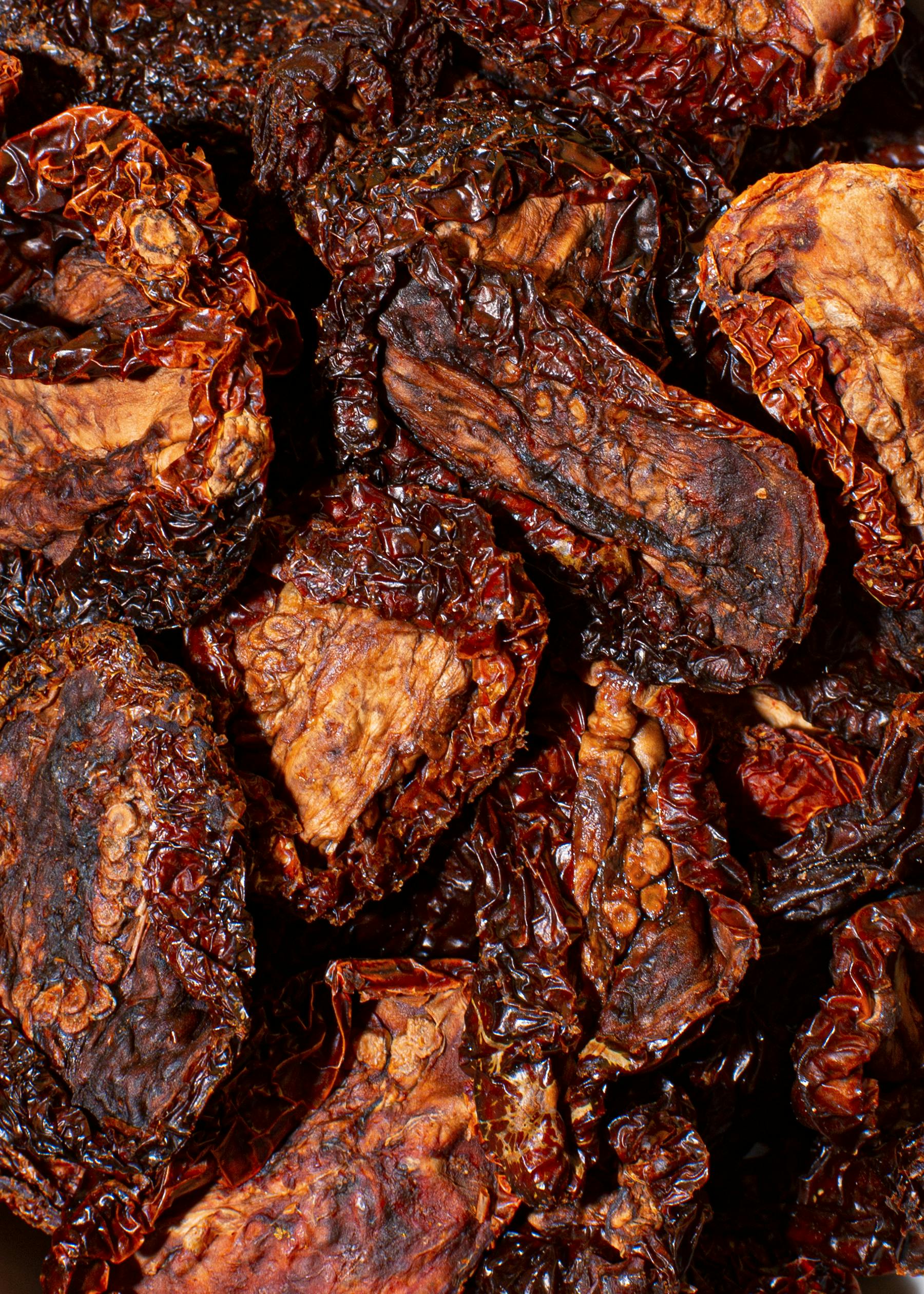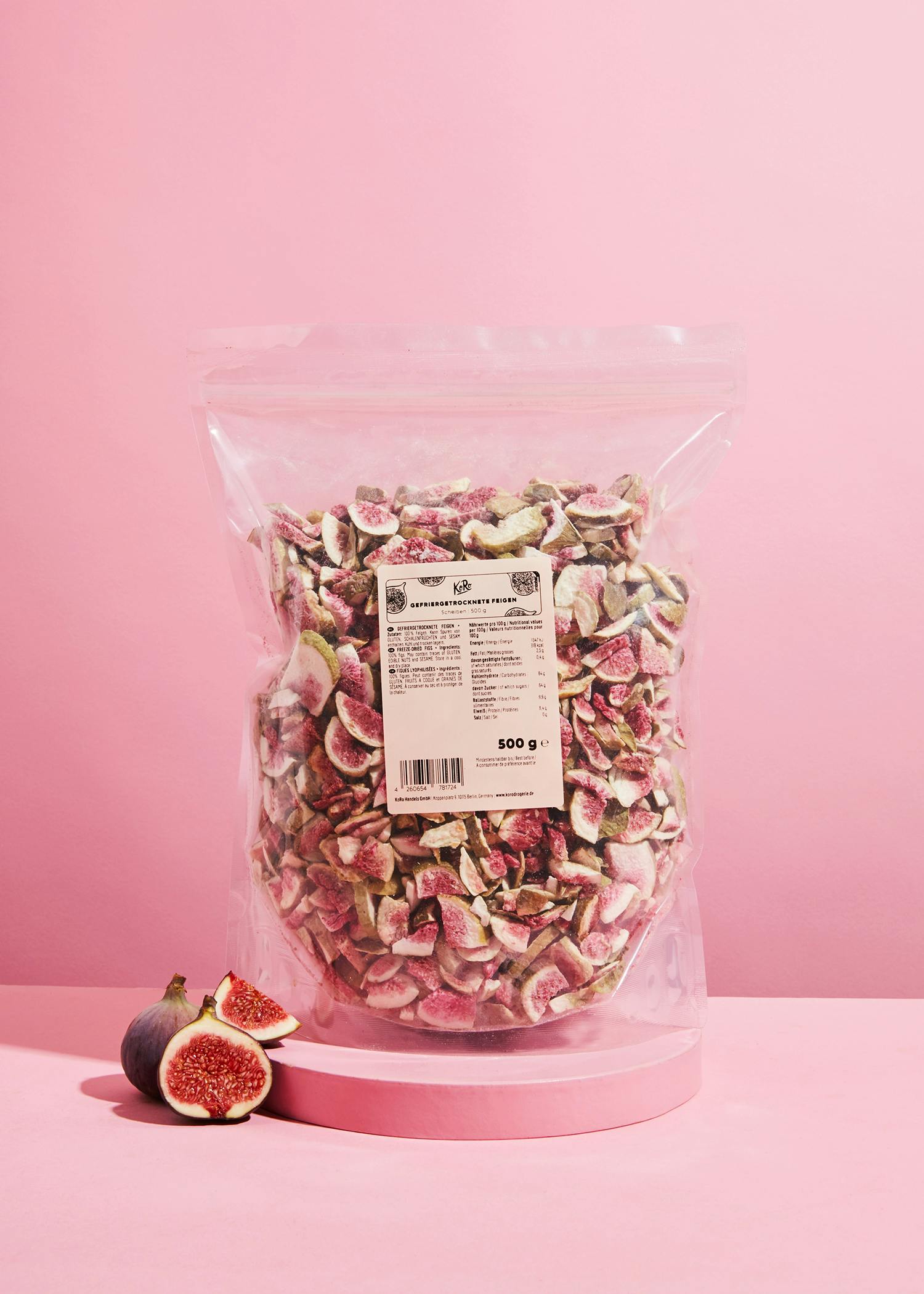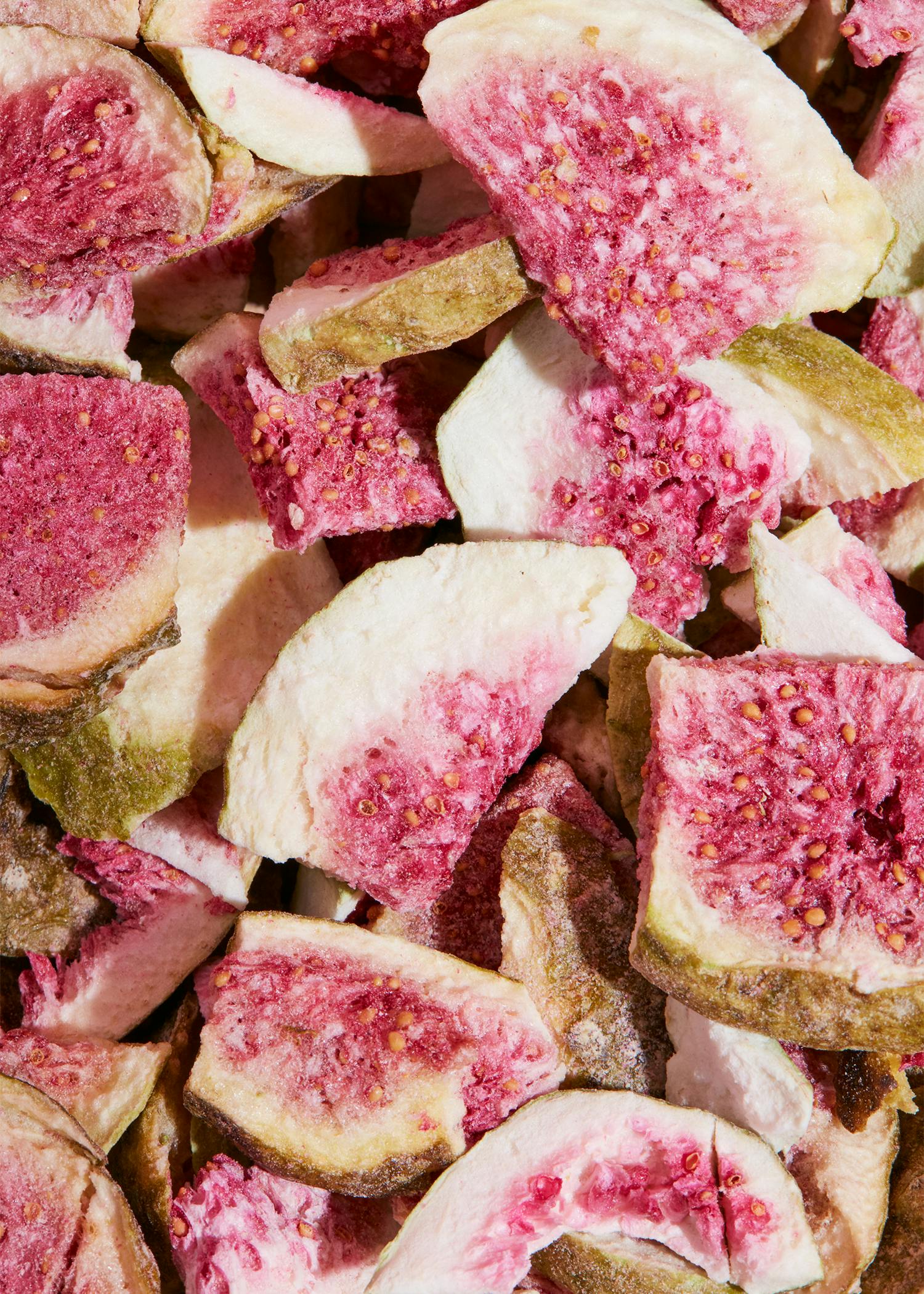Dried fruit - the classic
The method of drying is not only the absolute standard today, but also the oldest form of fruit drying. In the past, dates, grapes or figs fell from the trees and were dried by the heat of the sun. Today, the fruit is harvested or collected and dried.
To dehydrate fruit, it is dried in special ovens or dehydrators at low heat. Depending on the size of the fruit, it is either dried whole or in smaller pieces or strips. It is important that the fruit does not touch each other during drying, otherwise it will stick together. Drying causes the fruit to lose water, while the sugar content remains the same. This makes them taste much more intense. They can be dried at temperatures between 0 and 70 °C. But beware: if the temperature is too high, the fruit loses its taste, aroma and vitamins. We therefore use gentle drying methods for our fruit. When the water content is only around 20 %, they can be bagged! Fun fact: Ten kilos of apples shrink into one kilo of apple rings after processing.
Other manufacturers add sulphur or preservatives to dried fruit to guarantee a vibrant color and prevent rotting. However, as the drying process already contributes a large part to the preservation process, sulphur only has a minor effect. This is why we do not use any additives in our dried fruit - apple rings, persimmons, mango strips and many more.
Puffed fruit with that extra crunch!
Instead of popcorn and flips, we simply love to puff our fruit! And it's pretty quick. The fruit is heated in a vacuum and the water is removed within 1 to 3 minutes. This evaporates explosively due to the sudden change in pressure and "poof", the fruit swells slightly and solidifies in this state. The removal of all the water creates an airy crunch effect when the fruit is eaten. With KoRo products, you can buy all your favorite fruits, such as bananas, mango and pineapple, as a puffed version with the extra crunchy effect.
Freeze-drying - the special process
When fruit is freeze-dried, the shape actually only changes slightly. This is due to the special process we use: sublimation. This process has its origins in chemistry and means that frozen water immediately changes from a solid to a gaseous state when it is in a vacuum. The liquid stage is simply skipped.
The fruit is preserved by freeze-drying and then deep-frozen at low temperatures. A vacuum is then created with heat and the frozen water turns directly into water vapor. This allows us to remove almost all the water from the fruit without changing its shape. Depending on the fruit, freeze-drying can take up to 24 hours - so it takes a lot of time and energy. This is why freeze-dried fruit is more expensive than dehydrated fruit. But the wait is worth it: it is by far the gentlest method, as the color, shape, taste and nutritional values are preserved to a high degree compared to the dried version. Freeze-dried raspberries, peach and strawberry slices are therefore also ideal as a tasty, decorative topping.
